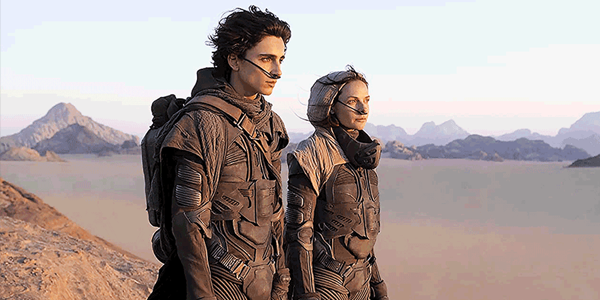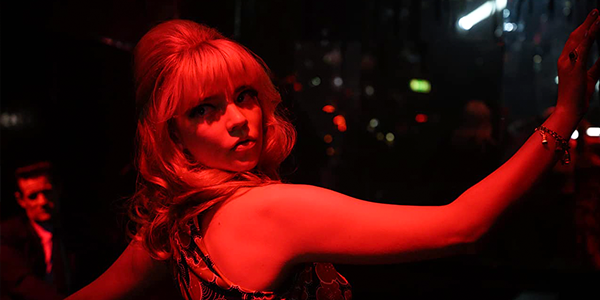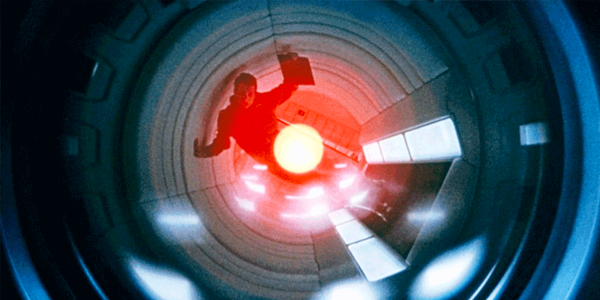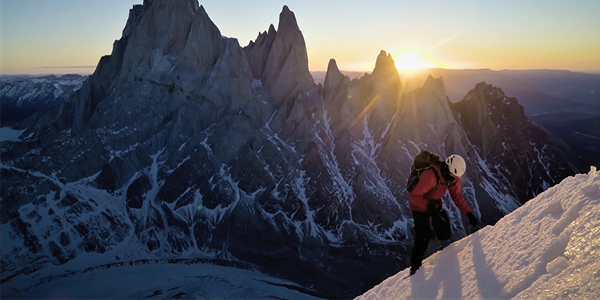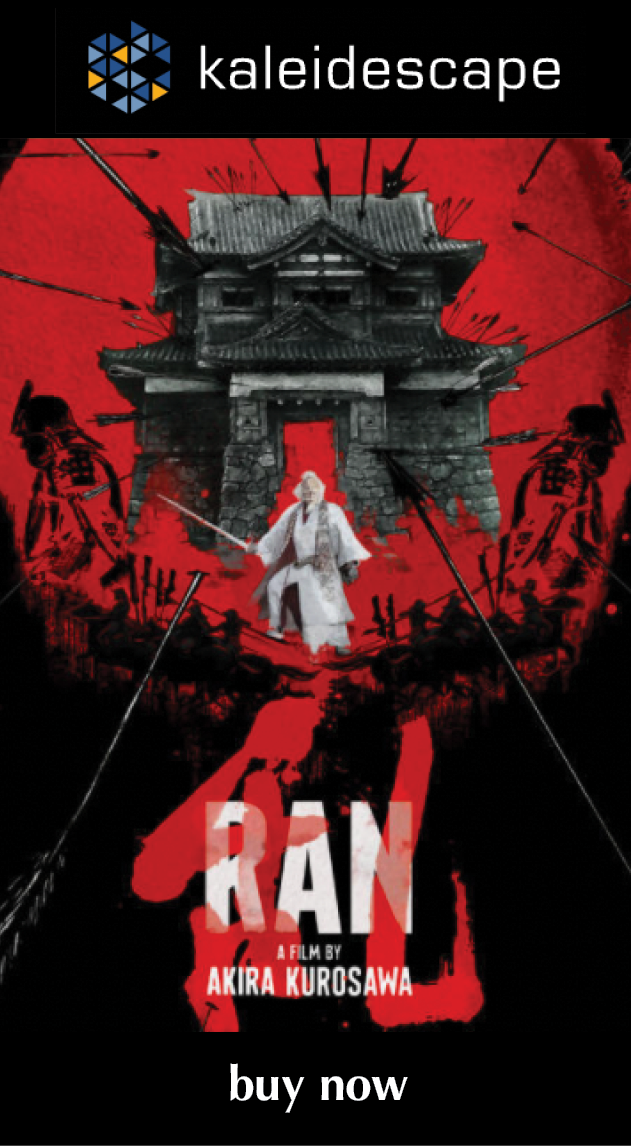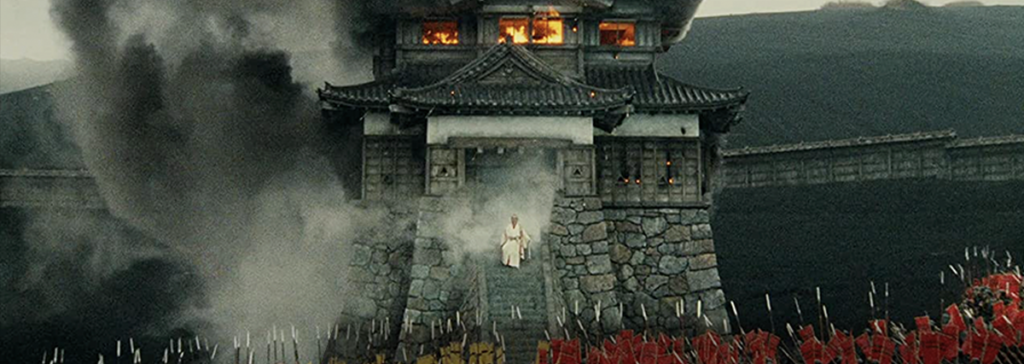
review | Ran
4K brings subtle improvements to the presentation of Kurosawa’s late-period riff on King Lear
by Dennis Burger
July 29, 2021
Discussing Akira Kurosawa’s Ran publicly is a strange feeling for me, so my apologies if I seem a bit more awkward than usual here. This film has always been a private indulgence for me, a secret pleasure. When new people come into my life, I might sit them down and make them watch Amélie, or Almost Famous, or Scott Pilgrim vs. the World, or The Conformist. But never, ever Ran.
Part of that boils down to being protective of it. You tell me you don’t like 2001: A Space Odyssey or The Searchers or Tokyo Story? It’s all good. Different strokes and all that. Sit next to me in the dark and watch Ran, though, and if you come out of the experience feeling anything less than reverence, I’m probably never inviting you over for movie night ever again.
At least, I assume that would be the case. I’ve never even shared the experience with my wife, simply out of fear that she would take custody of Bruno in the divorce.
Part of that forced isolation while viewing Ran, though, comes down to the recognition that this isn’t an easy film to watch. It’s exhausting, though not in the ways we would normally hang that adjective on a work of cinema. It’s methodically, deliberately exhausting. That fatigue is an essential element of the film.
It’s also, at times, a brutal film, both emotionally and physically. And although the violence is mostly cartoonish, with its cheap blood-squirting effects and its overwrought death scenes, it hits me harder in this film than almost any other. The carnage may look fake, but it feels real.
That makes it a questionable choice for a feel-good get-together with friends. All that said, this is a film I think needs to be in the collection of any serious cinephile, for more than one reason. Firstly, it’s Akira Kurosawa’s last truly great film. (Madadayo is very good, but falls just shy of greatness). Seen from a more charitable perspective, though, it’s incredible that the auteur managed to make such a vibrant work at the age of 75.
Kurosawa’s age definitely shows in the film, but not in its production. Ran—which, by the way, translates roughly into something like chaos, discord, turmoil, turbulence—is in many ways the filmmaker’s grandest statement on human nature. It has been described as a beautifully nihilistic work but I think that’s far too reductive. With this film, as with many of his best works, Kurosawa shines an unflinching light on human nature and the most ignoble tendencies of man. But describing the film as nihilistic assumes Kurosawa saw in us no capacity to rebel against our basest instincts, to rise above. Ran is a warning, a parable, a lesson from which to learn. He shows us humanity at its worst to inspire us to be better.
It’s also reductive to simply write Ran off as an adaptation of King Lear, as so many have done. Kurosawa didn’t recognize the parallels between the story he wanted to tell and the Bard’s famous play until late in the scripting process. Lear certainly influenced Ran in ways, some subconscious, but to pretend the latter is a direct adaption of the former—the way Throne of Blood (1957) very deliberately transposed the plot of The Scottish Play in space and time—would hang some additional baggage on the movie that it was never designed to carry.
Chances are good, though, that if you have any interest in purchasing this new 4K HDR release, you couldn’t care less about what I think of the film. You may even think the above opinions are daft. That’s fine.
What I think we’ll agree on, though, is that this is the best-looking home video release of Ran to date. Just don’t go in expecting monumental improvements over the excellent StudioCanal Blu-ray from 2016, which was taken from the 4K restoration used for here.
In my “4K HDR Wish List” from February, I said that I thought Ran, of all Kurosawa’s films, would “benefit most from the enhanced resolution and especially the expanded color gamut of 4K HDR. Watching the Blu-ray release, you can tell there’s ten pounds of color here crammed into an eight-pound bag.”
Well, I was wrong on both counts. There are, at best, a handful of scenes where the benefits of UHD resolution can be seen, and the colors are just as muted, just as reserved, just as measured as was seen on the Blu-ray. This new restoration was overseen and approved by cinematographer Shôji Ueda, so it’s safe to assume it’s true to the original vision for the film. But, as it turns out, 8-bit 1080p video was more than sufficient to unlock most of the detail and almost all of the colors found on the original camera negative.
There are some improvements in contrasts, which contribute to an image with more depth and nuance. Am I saying you shouldn’t upgrade to the 4K HDR version? Of course not. Why wouldn’t you want to own the best presentation of the film seen to date? Just go in knowing the improvements are incremental at best. There are also a few noticeable instances of edge-enhancement and grain that look more digital than organic but that was true of the 2016 Blu-ray as well and can’t be pinned on Kaleidescape’s otherwise unimpeachable presentation of this somewhat flawed but still much appreciated remaster.
The only options for audio on Kaleidescape are the original Japanese in stereo or remixed DTS-HD Master Audio 5.1. I don’t care how much of a purist you are—opt for the latter. It’s a textbook example of how films of this vintage and importance should be remixed. It’s largely a three-channel affair, with surrounds mostly used to add ambience and space to the mix. But dialogue sounds fantastic and is always utterly intelligible, locked firmly as it is in the center channel.
I do have a slight beef with the English subtitles, which can’t be turned off or modified in any form. The problem is that they’re mostly white, with but one pixel of black surrounding each letter to give it some contrast. For the bulk of the film, that’s perfectly fine. But in shots that are brightly lit, in which the lower portion of the image is mostly gray or white or very light tan, the subtitles get a bit lost in the image.
Other than that, the only major flaw with the Kaleidescape release is that Lionsgate, which is distributing this new 4K HDR release in the U.S., seems to have once again given Apple the exclusive on bonus features. That means iTunes is your only option if you want to enjoy the incredible feature-length documentary AK, short of buying the disc. That said, the Kaleidescape 4K HDR release is surprisingly cheap—just $14.99. So if you have that option, grab it.
But if you have the 2016 Blu-ray already and you’re not obsessed with very minor, momentary, sporadic improvements in picture quality that you’d probably only notice in a direct A/B comparison, you can probably safely stick with the disc you already own.
Dennis Burger is an avid Star Wars scholar, Tolkien fanatic, and Corvette enthusiast who somehow also manages to find time for technological passions including high-end audio, home automation, and video gaming. He lives in the armpit of Alabama with his wife Bethany and their four-legged child Bruno, a 75-pound American Staffordshire Terrier who thinks he’s a Pomeranian.
© 2025 Cineluxe LLC


